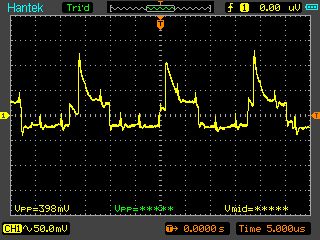 I just recently got a good deal on a second-hand Hantek DSO1060 – not the greatest scope in the world at 60MHz bandwidth/2ch/150MS/s (note: sub-nyquist for two channel). However, for what I paid, it was a darn good deal, especially since I don’t have a true DSO with your standard math functions (my main scope is the Tek 2221a, which has both analog and digital modes, where digital has none of the niceties like FFT/multiply/divide).
I just recently got a good deal on a second-hand Hantek DSO1060 – not the greatest scope in the world at 60MHz bandwidth/2ch/150MS/s (note: sub-nyquist for two channel). However, for what I paid, it was a darn good deal, especially since I don’t have a true DSO with your standard math functions (my main scope is the Tek 2221a, which has both analog and digital modes, where digital has none of the niceties like FFT/multiply/divide).
Coincidentally, I also just found myself building from spare parts, then trying to troubleshoot, a computer that happened to sporadically restart itself with no obvious cause. After loading the bios, then noticing odd case fan behavior where it would spool up and down over and over, then noticing the BIOS reporting highly unstable voltages, I started suspecting the power supply. And out came the DSO1060!
So what do we have. Let’s start with the ATX spec. According to wikipedia, the 5V rail should be within 0.25V of 5V even (so 4.75 to 5.25 volts) and the 12V rail should be within 0.6V of 12 (so 11.4 to 12.6 volts). Additionally, and very importantly, there are requirements on the ripple that’s allowed on both lines (and others, but we’ll ignore them). the 5V rail must have ripple < 50mV peak-to-peak, and the 12V rail <120mV peak-to-peak. Let’s look at an example of a good supply that I measured on an old-and-crappy computer, but one that seems to run fine:
This is the ripple on the good supply’s 12V line. Note it’s 71.8mVpp, well under 120. Also note that this waveform is very consistent looking.
And here’s the DC value, as (very roughly) measured by the scope. It says 11.7V, again well within spec.
And finally, the 5V rail ripple – 29.6mVpp, just over half of the 50mVpp allowed. I forgot to capture the DC measurement, but you get the point now.
Now, let’s take a look at the power supply of the computer that’s shutting down erratically.
5.31V DC. Already we see that the rail is out of spec, although the 8-bit measurement accuracy of the scope used for measurements like this is very poor, so it could be close to, or maybe even just within spec. At any rate, it’s not WELL within spec like the other supply.
12.3V seems to be within spec, but wait a minute…
WOW, nearly 400mVpp ripple! That’s WAY outside the 120mVpp allowance. And what you don’t see is that this waveform, though properly triggered, was bouncing all over the screen. Not consistent at all.
And the broken supply’s 5V ripple measurement. At 81.2mVpp, it isn’t wildly out of spec, but it’s not in either. And again, this was bouncing all over. No good at all.
So hopefully picking up a new supply will take care of all the stability issues this machine seems to have. Now you can see how specification requirements on things as mundane as power supply lines (and not even just DC value!) can have such a confusing but profound real-world impact on electronics performance. Next time you want to power your project from a switching supply and run into some sort of weird unexpected issue, make sure your components and circuits can handle the ripple and have appropriate power filtering!
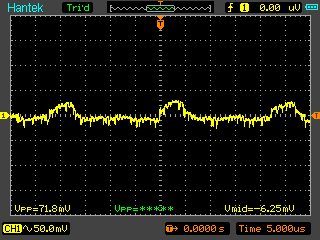
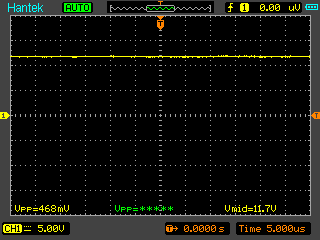
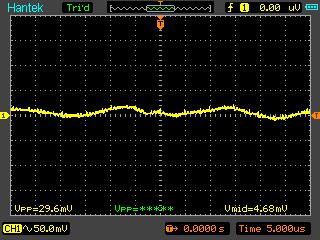
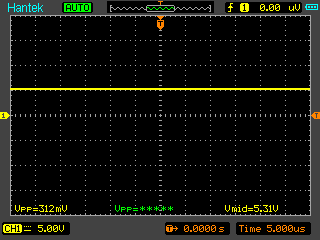
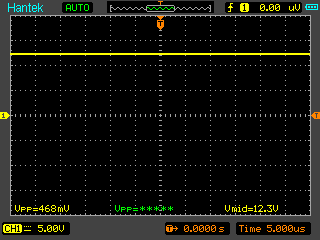
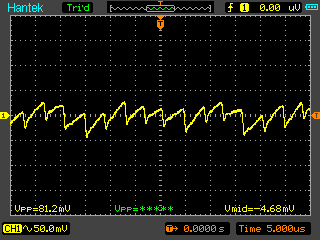
Be First to Comment